 |
Where was the detective story
until Poe breathed the breath of life into it?
— Arthur Conan Doyle (1909)
By Ron Fritze from Athens, Alabama
Posted December 18, 2009
Reading mystery novels with historical settings is a favorite pastime of mine. The mystery/detective story is an older genre of popular fiction. Some people credit Edgar Allen Poe with inventing detective fiction with his three short stories about Auguste Dupin, an amateur detective rather than a member of the police force. Starting with “The Murders in the Rue Morgue” (1841), Poe followed with “The Mystery of Marie Roget” (1842) and “The Purloined Letter” (1844). These stories established many of the conventions that have appeared in detective fiction ever since.
Blame It on the Chinese.
In fact, the Chinese invented the detective or mystery genre a thousand years ago in the form of stories about magistrates solving crimes. Novel length works began to appear after 1600, reaching their greatest development and sophistication during the eighteenth and nineteenth centuries. Mysteries remain a popular form of fiction among the Chinese even today.
The most famous of the Chinese magistrate/detectives was Judge Dee, a real historical figure living in the seventh century A.D. during the Tang Dynasty. Stories chronicling Dee’s crime solving adventures appeared during the eighteenth century, which means that the Chinese also invented the subgenre of mysteries with historical settings. The Dutch scholar Robert van Gulik (1910-1967) translated some Judge Dee stories for publication in 1949. The translation proved popular enough that van Gulik began writing his own original stories featuring Judge Dee.
Despite its lineage, the Chinese genre of detective stories had little or no influence on the development of crime fiction in the West.
Brother Cadfael Sparks the Revival.
These days, the subgenre of mysteries with historical settings rides a popular wave that first emerged in 1977 with the appearance of Ellis Peters’ Brother Cadfael stories and novels. Yes, there were other
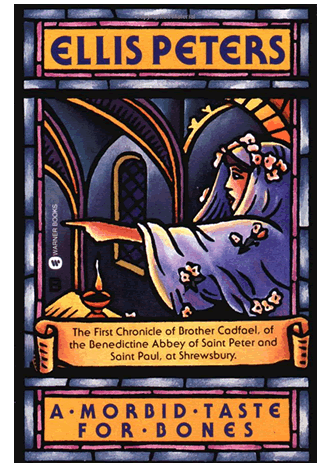 historical mystery novels on the market before Brother Cadfael, including Peters’ own Inspector George Felse. But it was Brother Cadfael who caught fire with readers, beginning in 1977 with the bestselling A Morbid Taste for Bones. The popularity of the Cadfael tales sparked a revival in the reading public’s interest in crime and mystery tales set in history. Typically, a slew of imitators emerged from the mist to add their voices to the genre.
historical mystery novels on the market before Brother Cadfael, including Peters’ own Inspector George Felse. But it was Brother Cadfael who caught fire with readers, beginning in 1977 with the bestselling A Morbid Taste for Bones. The popularity of the Cadfael tales sparked a revival in the reading public’s interest in crime and mystery tales set in history. Typically, a slew of imitators emerged from the mist to add their voices to the genre.
Brother Cadfael is an herbalist and the healer of the Benedictine monastery located in Shrewsbury. He relies on his medical and herbal knowledge to help him solve various crimes. As a result, other mysteries with medieval settings and herbalist sleuths have followed with greater and lesser degrees of originality and readability.
We Go to Hollywood.
In 1977, the same year that witnessed the literary birth of Brother Cadfael, Stuart Kaminsky introduced the character of Toby Peters, a private detective working in Hollywood in the late 1930s and the World War II years. Each Toby Peters novel features a case involving a famous figure, mostly actors and actresses or film directors from that era, although Eleanor Roosevelt and the Roosevelt’s Scottie Fala and Albert Einstein form the focus of the plot in other novels. The recently deceased Kaminsky (1934-2009) was a film professor at Northwestern and drew on his academic expertise to write his clever and funny novels.
Although historical mysteries are most commonly set in the nineteenth and twentieth centuries, which are better documented and more familiar to readers, intrepid authors have penned mysteries with settings involving chronological settings ranging from cavemen, ancient Egyptians (the era of Tutankhamen is particularly popular in this subgenre), ancient Greece, the pre-conquest Aztecs, late seventeenth-century Japan, Ben Franklin in London, Istanbul during the 1830s…. If you think about it, there is a lot of history and geography out there to choose from, opening almost endless possibilities for development of the genre.
If at First You Don't Succeed,
Then Go to New Orleans.
Ancient Rome has proven to be a particularly popular setting for mystery novels. The first writer to pioneer a Roman setting was Barbara Hambly, whose sole work for the subgenre, The Quirinal Hill Affair, appeared in 1983. Set in 116 A.D., the novel found only a modicum of success, even though it was reprinted in paperback in 1987 under the title Search the Seven Hills. Realizing that a Roman setting apparently wasn’t contributing to her personal success, Hambly moved on to other things, including a series of mystery novels set in antebellum New Orleans featuring a freedman named Benjamin January.
The Roman Triumvirate:
Lindsey, John and Steven
Others, however, have found ancient Rome to be a most congenial home for their detectives. Three particularly successful authors in this arena are Lindsey Davis of Great Britain and John Maddox Roberts and Steven Saylor of the USA.
Davis’s mysteries are set in Imperial Rome during the reign of the Emperor Vespasian, who rules from 69 to 79 A.D. His central character, Marcus Didius Falco, works as an informer for the palace
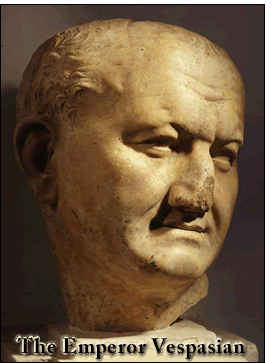 when he isn’t engaged in his freelance detecting work. Much of the intrigue takes the form of plots to overthrow Vespasian, which Falco helps to foil. The witty Falco has a love interest in a patrician woman named Helena Justinia — their relationship is reminiscent of Nick and Nora Charles of Thin Man fame. So if you think you might like to put the The Thin Man in a time machine and transport him to ancient Rome, you’ll like Falco.
when he isn’t engaged in his freelance detecting work. Much of the intrigue takes the form of plots to overthrow Vespasian, which Falco helps to foil. The witty Falco has a love interest in a patrician woman named Helena Justinia — their relationship is reminiscent of Nick and Nora Charles of Thin Man fame. So if you think you might like to put the The Thin Man in a time machine and transport him to ancient Rome, you’ll like Falco.
The stories are told as a first-person narration by Falco. Silver Pigs, the first of the series, takes place in 70 A.D. The next four novels also follow a metallic theme in their titles — Shadows in Bronze (1990), Venus in Copper (1991), The Iron Hand of Mars (1992), Poseidon’s Gold (1993) — until Davis’s list of plausible metals runs out. In the latest novel, Alexandria, the nineteenth of the series, Falco has managed to survive to 77 A.D. with the help of Helena and friends. Any bets as to where Falco will be when the volcano blows in 79 B.C.?
Testing the Sleuthing Mettle of Metellus
The Ohio-born Roberts writes prolifically in the genres of science fiction, fantasy, and mystery. His series of historical mysteries, known popularly as the SPQR Series, are set in the Roman Republic during
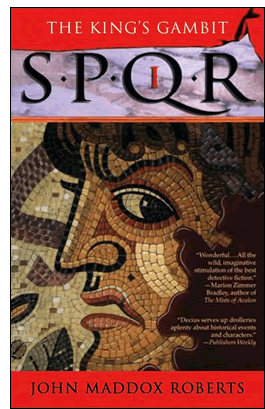 the period 70-60 B.C., a time of intrigue and multiplicity leading up to the formation of the First Triumvirate of Caesar, Pompey, and Crassus. The machinations of these men play a big part in the plots of these novels.
the period 70-60 B.C., a time of intrigue and multiplicity leading up to the formation of the First Triumvirate of Caesar, Pompey, and Crassus. The machinations of these men play a big part in the plots of these novels.
The hero is the young patrician, Decius Caecilius Metellus, who also serves as the first-person narrator. Interestingly, in Steven Saylor's novel Roman Blood, the Metelli clan appear as villains, whereas in Roberts's novels, a Metellus is the hero. The series begins with the oddly titled SPQR — the subtitle The King’s Gambit was added later when the novel was first reprinted in 1999 — which takes place in 78 B.C. The twelfth and latest novel in the series, Oracle of the Dead, covers Decius’s adventures during 58 B.C.
The first four SPQR mysteries came out in paperback. I was told by people in the business that when Roberts’s publisher decided to prune its list of authors, Roberts was one of the prunees. That is why there is a seven-year hiatus between Temple of the Muses in 1992 and Saturnalia in 1999. It is a good series, but the last few titles have been relatively short in length and not quite as good as the earlier novels.
Gordianus the Finder's Long Career
Texan Steven Saylor began his series of Roma Sub Rosa mysteries one year after Roberts with Roman Blood in 1991. The two series are set in approximately the same time period. Saylor’s first novel takes place in 80 B.C. during the dictatorship of Sulla (82-79 B.C.) and is
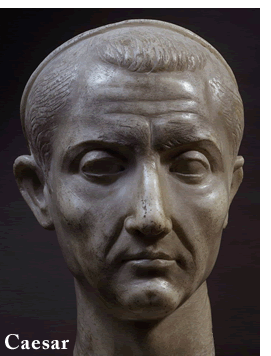 concerned with the historical trial of Sextus Roscius for the murder of his father. Gordianus the Finder, an early manifestation of today’s private detective, works with the young Cicero to prove the innocence of Sextus and bring about the fall of Sulla's henchman Chrysogonus. The basic events that guide the plot of Roman Blood actually occurred as described.
concerned with the historical trial of Sextus Roscius for the murder of his father. Gordianus the Finder, an early manifestation of today’s private detective, works with the young Cicero to prove the innocence of Sextus and bring about the fall of Sulla's henchman Chrysogonus. The basic events that guide the plot of Roman Blood actually occurred as described.
Later Roma Sub Rosa novels deal with the Spartacus Revolt, the Conspiracy of Cataline, and the rise and eventual triumph of Julius Caesar. Following the style favored by the genre, the stories are told in first person by Gordianus. He and the recurring characters age and develop over time. The latest novel in the series, The Triumph of Caesar (2008), is set in 46 B.C., making Gordianus an old man. Presumably there is an impending assassination that he will have to investigate.
Someone Doesn't Like the Stoics.
Other writers have also found acceptance among fans of the ancient Rome subgenre of historical mystery. Ron Burns briefly entered the genre in 1991 and 1992. In his first work, Roman Nights, the great city is beset with a spate of violent deaths of stoic philosophers. It is 180 B.C. and the emperor Marcus Aurelius is approaching his own death while leading the Roman armies on the Danubian front. Livinius Severus, a member of the upper class of equestrians, is asked to investigate why the stoics are being killed. He discovers a huge plot threatening not only the stability of the Empire, but also the safety of Livinius and all those around him.
Burns’ second novel, Roman Shadows, is set in the final days of the Roman Republic from 50-43 B.C. Gaius Livinius Severus, a young senator, looks into a mysterious series of similar murders. It soon becomes clear that the murders are connected to the intrigue and jostling for power between Pompey and Julius Caesar, including Caesar's debauched ally Mark Anthony. The later setting also put Burns into direct competition with Saylor and Roberts for the same historical era. After his second effort, Burns surveyed the landscape — and then moved on to the era of Lewis and Clark.
From 1995 onward, many others have joined the field of mysteries with ancient Roman settings.
The Gumshoe Is a Black Sheep.
With his novel Ovid (1995), the British writer David Wishart began the Marcus Corvinus series set during the reign of the Emperor Tiberius, who reigned from 14 to 37 A.D. The protagonist Marcus Corvinus, a
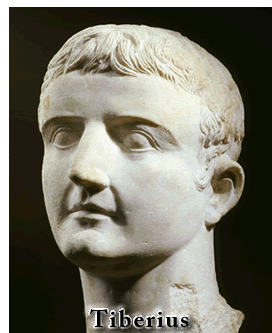 member of the senatorial class, has decided not to pursue the cursus honorum or course of honor that members of the Roman elite followed as a path to high office and wealth. Marcus Corvinus chooses the avocation of solving murders and other mysteries, a choice that makes him the black sheep of his family.
member of the senatorial class, has decided not to pursue the cursus honorum or course of honor that members of the Roman elite followed as a path to high office and wealth. Marcus Corvinus chooses the avocation of solving murders and other mysteries, a choice that makes him the black sheep of his family.
Some of the Corvinus mysteries involve the central character in deep intrigues with the imperial family, including work for the formidable and dangerous Livia, wife of the first emperor Augustus. If you like the classic detective writer Raymond Chandler, you’ll probably like Wishart, whose style self-consciously mirrors that of Chandler. It works fairly well. The Corvinus novels provide good entertainment, although they are definitely second string when compared to the novels of Davis and Saylor. For some reason, The Lydian Baker, the fourth book in the series, has remained stubbornly and expensively out of print for a long time.
This Detective Follows the Cult of Mithra.
Americans Mary Reed and Eric Mayer, husband and wife co-authors, brought out the John the Eunuch mystery series in 1999 with One for Sorrow. John the Eunuch is the Lord Chamberlain for the Emperor Justinian (527-565). He also solves mysteries for the Emperor. In One for Sorrow, murders pile up around the search for the Holy Grail. John the Eunuch can be a somewhat disinterested party in the competition for Christian relics as he is a follower of the cult of Mithra. At the time Mithraism was in the process of losing the competition for proselytes to Christianity. According to publisher notices, the “John the Lord Chamberlain Mysteries” series will reach Eight for Eternity in 2010.
The British writer Rosemary Rowe (a pseudonym used by Rosemary Aitken) introduced the Libertus series in 1999. Libertus is a Celtic slave living in Glevun, the ancient Roman name for Gloucester. He continually finds himself involved with solving mysteries while trying to earn his keep as a maker of mosaics for rich people’s houses. The first novel in the series, The Germanicus Mosaic (1999), is set in 186 A.D. It’s solid entertainment, but not up to the Davis and Saylor standard. The series will contain eleven volumes when Requiem for a Slave appears in 2010.
The indefatigable Paul (P. C.) Doherty, a prodigious British writer of historical
 mystery novels, most with medieval settings, has made contributions to the ancient Roman setting. His first ancient Roman mystery, Domina (2002), follows the career of Agrippina (15-59), the wife of Claudius and the mother of Nero. Moving forward in history, his other four Roman novels — Murder Imperial (2003), The Song of the Gladiator (2004), The Queen of the Night (2006), and Murder’s Immortal Mask (2008) — are all set in the reign of the Emperor Constantine, who reigned from 306 to 337, and feature his mother the Empress Helena. Doherty’s novels are easy reads, but they tend to be formulaic with most of his protagonists developed flatly.
mystery novels, most with medieval settings, has made contributions to the ancient Roman setting. His first ancient Roman mystery, Domina (2002), follows the career of Agrippina (15-59), the wife of Claudius and the mother of Nero. Moving forward in history, his other four Roman novels — Murder Imperial (2003), The Song of the Gladiator (2004), The Queen of the Night (2006), and Murder’s Immortal Mask (2008) — are all set in the reign of the Emperor Constantine, who reigned from 306 to 337, and feature his mother the Empress Helena. Doherty’s novels are easy reads, but they tend to be formulaic with most of his protagonists developed flatly.
In Comes Luke, Pliny, and Tacitus
Albert A. Bell, Jr., entered the ancient Roman mystery forum in 2002 along with Doherty. His novels feature the historical personage Pliny the Younger (61-112) as the protagonist with the historian Tacitus (56-117) as his Watson. All Roads Lead to Murder is set in 83 A.D. and features the Evangelist Luke. Early Christians are given a positive portrayal in Bell’s novels. After a long bout with self-confessed writer’s block, Bell brought out his second Pliny mystery, The Blood of Caesar, in 2008. Bell’s mysteries are entertaining but like Doherty, they are definitely not up to the Davis and Saylor standard.
The year 2006 saw the appearance of a new British writer of mysteries with Roman settings. Ruth Downie created the character of Gaius Petrius Ruso, a medical doctor serving with the Roman legions occupying Britain during the reign of the Emperors Trajan and Hadrian. Medicus is set in Deva, the Roman name for Chester in 117, the year of Emperor Trajan’s death and the succession of Hadrian. Ruso is a conscientious doctor who saves the life of a British slave girl Tilla. Murders are cropping up around Deva, and Ruso sets out to solve them. Further Ruso mysteries are Terra Incognita (2008) and Persona Non Grata (2009). Downie’s plots are robust and her characters are likeable and well developed. She promises to be in a league with Davis and Saylor.
Fanatics, Conspirators, and Complex Plots
Despite the name, Ben Proctor is a woman with American and Italian links. The protagonist of her novels is Aelius Spartianus, an officer serving Emperor Diocletian, who reigned from 284 to 305. Spartianus is also a historical person. As one of the writers of the Lives of the
 Later Caesars, Spartianus was required by Diocletian to do historical research on the Emperor Hadrian. Proctor’s first Spartianus novel, The Water Thief (2007), takes place mostly in Egypt during 304 A.D. It involves a series of murders connected to a vast and lengthy conspiracy against the Roman Empire.
Later Caesars, Spartianus was required by Diocletian to do historical research on the Emperor Hadrian. Proctor’s first Spartianus novel, The Water Thief (2007), takes place mostly in Egypt during 304 A.D. It involves a series of murders connected to a vast and lengthy conspiracy against the Roman Empire.
Proctor’s second mystery, The Fire Walker (2008), follows the adventures of Spartianus as he tracks down Christian fanatics, some of whom may be engaged in a con game. Spartianus is not a Christian, nor was Diocletian, and since Proctor tells the story from Spartianus’s point of view, early Christians do not appear all that positively. Spartianus is a complex character, befitting of Proctor’s complex plots. The books are well written and entertaining, albeit darker in tone than Downie’s novels. Still, I would strongly recommend Proctor’s Spartianus books, although I am a bit worried that a third Spartianus has not yet appeared.
Whose Noir Is It?
Finally, there is Kelli Stanley’s Nox Dormienda: A Long Night for Sleeping, which appeared in 2008. Like Downie’s Ruso tales, Stanley’s protagonist, Arcturus, is also a doctor serving the Roman army in occupied Britain. Half British and half Roman, Arcturus lost his parents in the revolt of Boudicca and works for the Roman governor Agricola (40-93) during the reign of the Emperor Domitian, who reigned from 81 to 96. Agricola was a real historical personage. The historian Tacitus, his son-in-law, wrote a book about him.
Stanley claims to be the creator of the genre of Roman Noir, by which she seems to mean mysteries with ancient Roman settings but having the tone of a Dashiell Hammett or a Raymond Chandler novel. Stanley’s claim is problematic, given that Lindsey Davis had already written in the style of Roman Noir about twenty years ago — and did it much better. Another problem is that the term Roman Noir is also not original to Stanley. Roman Noir is a term long used by the French for hard-boiled and gritty detective fiction.
Stanley plans more Arcturus novels. Let’s hope they improve. Nox Dormienda is painfully average, much like Doherty’s Roman mysteries.
A Recommendation or Two
If you are looking for a mystery set in ancient Rome, I would suggest you start with either Lindsey Davis or Steven Saylor. But first, a word of warning: Davis’s first Falco mystery, Silver Pigs, is deficient in the wow factor. The banter between Falco and Helena gets a bit tiresome at times. However, from the second book, Shadows in Bronze, all the way through the most recent, Alexandria, the series has been great with memorable, likeable, and developing characters and fine plots.
Saylor’s Roman Blood, the first in the Roma Sub Rosa series, is possibly the best of the lot, although the rest of the books are all quite good. I think it may be that I prefer the younger Gordianus. Be that as it may, if I have guided you to some fun and relaxing reading, I have accomplished what I sat out to do.
 Ron Burns
Ron Burns
Roman Nights, 1991
Roman Shadows, 1992
 Lindsey Davis
Lindsey Davis
Silver Pigs, 1989
Shadows in Bronze, 1990
Venus in Copper, 1991
The Iron Hand of Mars, 1992
Poseidon's Gold, 1992
Last Act in Palmyra, 1994
Time to Depart, 1995
A Dying Light in Corduba, 1996
Three Hands in the Fountain, 1997
Two for the Lions, 1999
One Virgin Too Many, 2000
Ode to a Banker, 2001
A Body in the Bath House, 2002
The Jupiter Myth, 2003
The Accusers, 2004
Scandal Takes a Holiday, 2004
See Delphi and Die, 2006
Saturnalia, 2007
Alexandria, 2009
Nemesis, 2010 (forthcoming)
 John Maddox Roberts
John Maddox Roberts
SPQR: The King’s Gambit, 1990
The Cataline Conspiracy, 1991
The Sacrilege, 1992
The Temple of the Muses, 1992
Saturnalia, 1999
Nobody Loves a Centurion, 2001
The Tribune's Curse, 2003
The River God's Vengeance, 2004
The Princess and the Pirates, 2005
A Point of Law, 2006
Under Vesuvius, 2007
Oracle of the Dead, 2008
The Year of Confusion, 2010, forthcoming
 Rosemary Rowe
Rosemary Rowe
Germanicus Mosaic, 1999
A Pattern of Blood, 2000
Murder in the Forum, 2001
The Chariots of Calyx, 2002
The Legatus Mystery, 2003
The Ghosts of Glevum, 2004
Enemies of the Empire, 2005
A Roman Ransom, 2006
A Coin for the Ferry Man, 2007
Death at Pompeia’s Wedding, 2009
Requiem for a Slave, 2010 (forthcoming)
 Steven Saylor
Steven Saylor
Roman Blood, 1991
Arms of Nemesis, 1992
Cataline's Riddle, 1993
Venus Throw, 1995
A Murder on the Appian Way, 1996
The House of the Vestals, 1997
Rubicon, 1999
Last Seen In Massilia, 2000
Mist of Prophecies, 2002
The Judgment of Caesar, 2004
The Triumph of Caesar, 2008
 David Wishart
David Wishart
Ovid, 1995
Germanicus, 1997
Sejanus, 1998
The Lydian Baker, 1998
Old Bones, 2000
Last Rites, 2001
White Murder, 2002
A Vote for Murder, 2003
Parthian Shot, 2004
Food for the Fishes, 2005
In at the Death, 2007
Illegally Dead, 2008
Click on the black panther to read about Ron Fritze's new book,
Invented Knowledge: False History, Fake Science, and Pseudo-religions.
|

|
















 |
 |




 historical mystery novels on the market before Brother Cadfael, including Peters’ own Inspector George Felse. But it was Brother Cadfael who caught fire with readers, beginning in 1977 with the bestselling A Morbid Taste for Bones. The popularity of the Cadfael tales sparked a revival in the reading public’s interest in crime and mystery tales set in history. Typically, a slew of imitators emerged from the mist to add their voices to the genre.
historical mystery novels on the market before Brother Cadfael, including Peters’ own Inspector George Felse. But it was Brother Cadfael who caught fire with readers, beginning in 1977 with the bestselling A Morbid Taste for Bones. The popularity of the Cadfael tales sparked a revival in the reading public’s interest in crime and mystery tales set in history. Typically, a slew of imitators emerged from the mist to add their voices to the genre.
 when he isn’t engaged in his freelance detecting work. Much of the intrigue takes the form of plots to overthrow Vespasian, which Falco helps to foil. The witty Falco has a love interest in a patrician woman named Helena Justinia — their relationship is reminiscent of Nick and Nora Charles of Thin Man fame. So if you think you might like to put the The Thin Man in a time machine and transport him to ancient Rome, you’ll like Falco.
when he isn’t engaged in his freelance detecting work. Much of the intrigue takes the form of plots to overthrow Vespasian, which Falco helps to foil. The witty Falco has a love interest in a patrician woman named Helena Justinia — their relationship is reminiscent of Nick and Nora Charles of Thin Man fame. So if you think you might like to put the The Thin Man in a time machine and transport him to ancient Rome, you’ll like Falco. the period 70-60 B.C., a time of intrigue and multiplicity leading up to the formation of the First Triumvirate of Caesar, Pompey, and Crassus. The machinations of these men play a big part in the plots of these novels.
the period 70-60 B.C., a time of intrigue and multiplicity leading up to the formation of the First Triumvirate of Caesar, Pompey, and Crassus. The machinations of these men play a big part in the plots of these novels. concerned with the historical trial of Sextus Roscius for the murder of his father. Gordianus the Finder, an early manifestation of today’s private detective, works with the young Cicero to prove the innocence of Sextus and bring about the fall of Sulla's henchman Chrysogonus. The basic events that guide the plot of Roman Blood actually occurred as described.
concerned with the historical trial of Sextus Roscius for the murder of his father. Gordianus the Finder, an early manifestation of today’s private detective, works with the young Cicero to prove the innocence of Sextus and bring about the fall of Sulla's henchman Chrysogonus. The basic events that guide the plot of Roman Blood actually occurred as described. member of the senatorial class, has decided not to pursue the cursus honorum or course of honor that members of the Roman elite followed as a path to high office and wealth. Marcus Corvinus chooses the avocation of solving murders and other mysteries, a choice that makes him the black sheep of his family.
member of the senatorial class, has decided not to pursue the cursus honorum or course of honor that members of the Roman elite followed as a path to high office and wealth. Marcus Corvinus chooses the avocation of solving murders and other mysteries, a choice that makes him the black sheep of his family. mystery novels, most with medieval settings, has made contributions to the ancient Roman setting. His first ancient Roman mystery, Domina (2002), follows the career of Agrippina (15-59), the wife of Claudius and the mother of Nero. Moving forward in history, his other four Roman novels — Murder Imperial (2003), The Song of the Gladiator (2004), The Queen of the Night (2006), and Murder’s Immortal Mask (2008) — are all set in the reign of the Emperor Constantine, who reigned from 306 to 337, and feature his mother the Empress Helena. Doherty’s novels are easy reads, but they tend to be formulaic with most of his protagonists developed flatly.
mystery novels, most with medieval settings, has made contributions to the ancient Roman setting. His first ancient Roman mystery, Domina (2002), follows the career of Agrippina (15-59), the wife of Claudius and the mother of Nero. Moving forward in history, his other four Roman novels — Murder Imperial (2003), The Song of the Gladiator (2004), The Queen of the Night (2006), and Murder’s Immortal Mask (2008) — are all set in the reign of the Emperor Constantine, who reigned from 306 to 337, and feature his mother the Empress Helena. Doherty’s novels are easy reads, but they tend to be formulaic with most of his protagonists developed flatly. Later Caesars, Spartianus was required by Diocletian to do historical research on the Emperor Hadrian. Proctor’s first Spartianus novel, The Water Thief (2007), takes place mostly in Egypt during 304 A.D. It involves a series of murders connected to a vast and lengthy conspiracy against the Roman Empire.
Later Caesars, Spartianus was required by Diocletian to do historical research on the Emperor Hadrian. Proctor’s first Spartianus novel, The Water Thief (2007), takes place mostly in Egypt during 304 A.D. It involves a series of murders connected to a vast and lengthy conspiracy against the Roman Empire.
